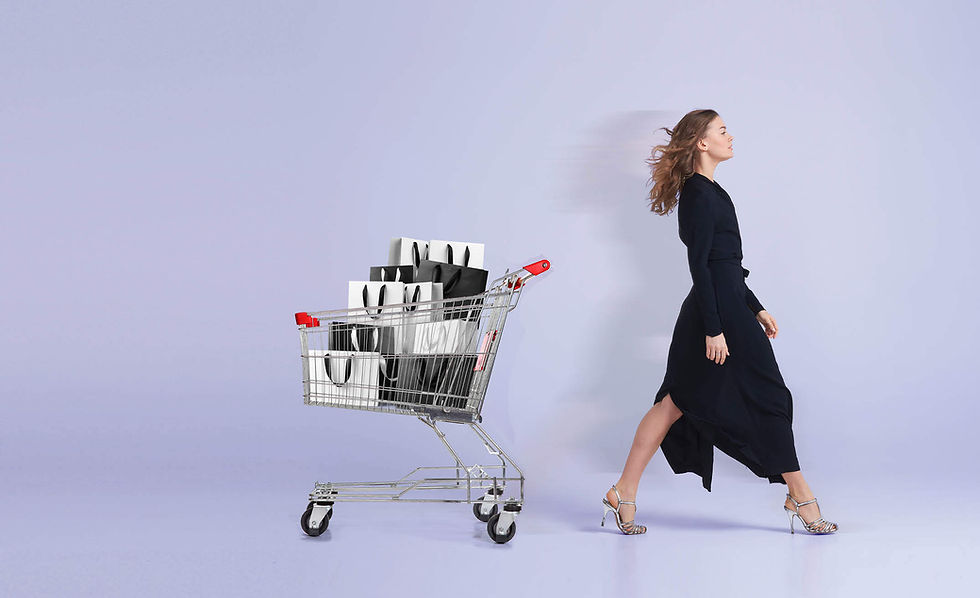Stop Wasting Money on Generic Cart Emails (And Start Making Your Customer Actually Buy More)
- Kyle Olmstead
- Sep 19
- 4 min read
How behavioral data and smart upsells turn abandoned carts into revenue engines, without sounding like a pushy salesperson.
Here’s a little secret most brands don’t want you to know: your abandoned cart emails probably stink.
Not because you don’t care. Not because you haven’t tried. It’s because you’re playing the game all wrong. Generic “hey, come back and buy” messages are literally leaving money on the table, and worse, they’re annoying your customers.

Here’s the hard truth: Customers don’t just abandon carts because they forgot. They abandon carts because something about your flow didn’t respect them. Timing. Relevance. Messaging. Context. All of it matters.
And yet, so many brands treat cross-sells and upsells like a side hustle. Throw one at the checkout and hope it sticks. That’s cute. But it doesn’t scale.
Why Timing is Everything (No, Seriously)
Imagine this: someone adds a $150 blender to their cart, walks away, and then gets an email 48 hours later offering a $50 subscription for smoothie recipes.
…Cool? Not really. That’s like texting someone two days after a date asking if they want to move in together. Timing kills conversions (and credibility).
Best practice:
Send the first abandoned cart email within the first hour. Urgency works. Context works. Not spammy, just helpful.
Layer in 1–2 follow-ups over the next 24 hours. Anything beyond that? Risky. You look desperate. Customers bounce.
Layer Complementary Products, Don’t Just Push Extras
Upsells aren’t about pushing whatever you have in stock. They’re about behavioral relevance.
Someone buys a yoga mat? Suggest a towel or a carrying strap.
Someone buys pre-workout? Offer a shaker that complements it, not a random protein powder.
Think: “How can I make their life easier or better right now?” That’s the principle. Complement, don’t clutter.
Trust is Non-Negotiable
Here’s a trap I see all the time: brands cram upsells into every touchpoint, spammy and aggressive. Customers notice. They click unsubscribe. Or worse, they buy once and ghost you forever.
Rule of thumb: every offer should feel like a suggestion, not a shove. Tone matters. Segmentation matters. Relevance matters.
Personalize with behavior data.
Match the upsell timing to the user journey.
Keep your messaging human. Helpful. Conversational.
Behavioral Data is Your Secret Weapon
Data doesn’t just tell you what someone bought. It tells you:
When they’re likely to buy
What they’re likely to add next
What kind of messaging actually works
Example (hypothetical): A subscriber adds a weighted vest to their cart. Data shows they usually buy accessories 24 hours later. Boom, you schedule a follow-up offering a resistance band set exactly 24 hours later. Chances of adding the upsell? Way higher.
Abandoned Cart Recovery Done Right
Forget the one-size-fits-all templates. The most effective abandoned cart flows:
Immediate reminder: Friendly nudge within an hour. “Hey, looks like you left something behind!”
Behavioral upsell: Complementary product or offer based on what they actually added.
Last-chance incentive: Optional, subtle urgency. “Still thinking it over? We’re holding your cart for 24 hours.”
Pro tip: keep your tone light, human, and helpful. The copy should feel like a friend reminding them, not a robot chasing a sale.
Increase Average Order Value Without Being Pushy
Upsells and cross-sells aren’t just about throwing extra SKUs at someone. It’s about strategy and psychology:
Stack offers intelligently: Small, low-risk add-ons first. Then, premium complementary products.
Respect price sensitivity: Timing matters more than discounts. People don’t always need a coupon, they need relevance.
Micro-moments matter: Track when customers are most engaged and present your offers there.
Layering for Maximum Effect
Think of it like a conversation:
“Oh, you bought running shoes? Nice! Want some socks that won’t give you blisters?”
“Picked up that skincare set? Cool. Here’s a serum that actually works with it.”
Layering = trust + convenience + relevance. Customers actually feel cared for, not sold to.
Quick Checklist for a Revenue-Boosting Flow
First abandoned cart email within 1 hour
1–2 follow-ups within 24 hours
Complementary upsells based on behavior
Messaging is conversational, helpful, and human
Optional gentle incentive for final push
All timing and personalization informed by data
Personal Note
I’ve seen brands kill revenue by ignoring these fundamentals. The ones who nail them? They don’t just recover carts, they increase average order value without being pushy.
It’s like cooking: you don’t just throw ingredients into a pot. You layer, time, and balance flavors. Same thing with cross-sells, upsells, and abandoned carts.
TL;DR
Generic cart emails = revenue loss
Timing and behavior = everything
Layer complementary products, don’t spam extras
Trust beats urgency 99% of the time
Data lets you make offers that actually convert
💡 So here’s my challenge to you: look at your current flows. Are they helping your customers, or just helping your numbers? Could a small tweak in timing or relevance 10x your revenue without touching your product catalog?
Question for you: If your abandoned cart flows were behaving like your best sales rep, would they close more deals, or get ghosted?



Comments